The Endangered Status of Tuna: Urgent Conservation Needs
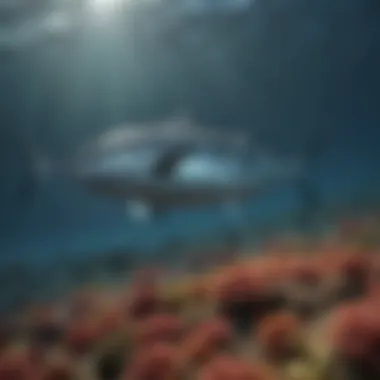

Research Overview
Tuna species are increasingly facing threats to their survival due to various human activities. The ongoing decline of these fish raises a red flag for marine biodiversity and ecosystems. This overview aims to shed light on the intricate balance of our oceans and the significant role tuna play within them.
Summary of Key Findings
Research indicates that several species of tuna, such as the Atlantic bluefin tuna and yellowfin tuna, are on the brink of extinction. Factors contributing to their endangered status include:
- Overfishing: Unsustainable fishing practices are depleting tuna stocks far beyond their recovery threshold.
- Bycatch: The incidental capture of non-target species during fishing operations adds to the population decline.
- Climate Change: Rising ocean temperatures and changing currents disrupt the habitat and breeding of tuna, affecting their survival.
Background and Context
Tuna are not just commercially important; they are apex predators within the marine environment. Their role in the oceanic food web is crucial, acting as stabilizers that balance the populations of their prey. However, the allure of tuna in culinary markets, particularly sushi, has triggered relentless fishing that threatens their existence. Once abundant, tuna now face limitations due to myriad environmental and human-made pressures.
Methodology
Understanding the plight of tuna necessitates a careful and systematic approach. The methodologies adopted in examining these issues are multi-faceted and comprehensive.
Experimental Design
Research studies employ a mix of field observations, statistical analyses, and ecological modeling to assess tuna populations and their habitats. Assessments of fishing practices often include collaboration between fisheries scientists and regulatory bodies to create a clearer picture of current numbers and trends.
Data Collection Techniques
A variety of techniques are employed in gathering data about tuna populations:
- Catch Reporting: Fishermen are required to report the number and size of tuna caught, enabling monitoring of stocks.
- Tagging Programs: Tags placed on tuna allow scientists to track movements, breeding sites, and population health.
- Satellite Tracking: Advanced technology helps researchers understand migration patterns and habitat usage.
"Conserving tuna is not merely about saving a species; it’s about safeguarding the health of the oceans themselves."
As we delve deeper into the factors behind their endangered status, the subsequent sections will illuminate the urgent need for both public awareness and effective conservation strategies.
Preamble to Tuna Species
The importance of understanding tuna species cannot be overstated, particularly in the context of marine ecosystems and the challenges they face today. As we embark on this exploration of tuna, we unveil the diverse types and vital ecological roles they play. Knowing about tuna is not just for the marine biologists or ecologists; it has rippling effects on the fishing industry, local economies, and even global markets.
Tuna, at first glance, look like just another fish in the sea. However, their significance extends far beyond simple classification. Tuna are apex predators in their aquatic environments, influencing the balance of marine life. Their absence can throw entire ecosystems into chaos, much like how a missing piece in a puzzle can affect the overall picture. Moreover, tuna species are also threatened by myriad factors, making this topic not only relevant but urgent as well.
Overview of Tuna Types
Tuna are a fascinating group of fish that encompass various species, each with unique characteristics and habitats. The most well-known types include the Atlantic Bluefin Tuna, Yellowfin Tuna, and Albacore Tuna.
- Atlantic Bluefin Tuna: Often seen as the most prestigious species, it is renowned for its size and high market value.
- Yellowfin Tuna: Typically found in warmer ocean waters, this type tends to be smaller than its Bluefin counterpart but is still commercially important.
- Albacore Tuna: Labeled the ‘longfin’ for its longer pectoral fins, it is predominantly caught for canned tuna products, especially in the United States.
Aside from these, there are several other species including Skipjack and Bigeye Tuna, each adapted to their specific niches in the ocean. These varied types, with their differing behaviors and populations, emphasize the need for targeted conservation strategies that address the unique circumstances facing each species.
Ecological Role of Tuna in Marine Environments
Tuna play a pivotal role in marine ecosystems, functioning not just as predators, but also as prey for larger marine species. They help to maintain the balance within the marine food web. Without these fish, the population of smaller fish can explode, leading to overgrazing of plankton and harming overall ocean health.
In essence, tuna serve as key indicators of ocean health. If tuna populations begin to dwindle, it is often a red flag signaling broader ecological distress. As they migrate long distances, they also contribute to the nutrient cycling in different regions of the ocean, impacting various marine habitats.
Indeed, throughput this journey into tuna species, one thing becomes obvious: ensuring their survival is about more than just protecting a fish species; it’s about safeguarding the entire marine ecosystem that relies on their existence. Therefore, our understanding of these remarkable fish is paramount in addressing the broader issues surrounding their endangered status.
Current Status of Tuna Populations
Understanding the current status of tuna populations is vital to fully grasp the extent of their endangerment. These magnificent creatures are not just mere swimmers in our oceans; they play a crucial role in marine ecosystems and have significant economic value. Yet, the alarming decline in their numbers calls for urgent action.
In this part, we will delve deeper into two pivotal aspects: global tuna species declarations and key statistics illustrating the scale of tuna decline.
Global Tuna Species Declarations
International discussions about tuna conservation often center around species declarations. These declarations form a crucial framework by highlighting which species are most at risk and the global consensus on their conservation status.
For instance, the International Union for Conservation of Nature, or IUCN, has classified several tuna species as endangered or vulnerable. Among these, the Atlantic Bluefin Tuna stands out, reflecting the precarious balancing act between fishing interests and sustainability. Furthermore, organizations like the World Wide Fund for Nature (WWF) are involved in advocating for stricter regulations to protect these species. This global awareness has led to enhanced monitoring efforts and has prompted nations to come together to tackle the issue of tuna decline. It reflects the growing understanding that conservation is a shared responsibility, transcending territorial waters.
"We are all part of the same ocean, and if we don’t act now, we might lose more than we can afford to risk."
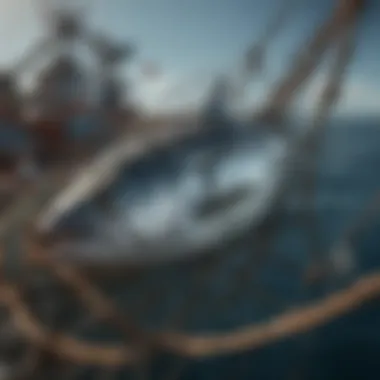
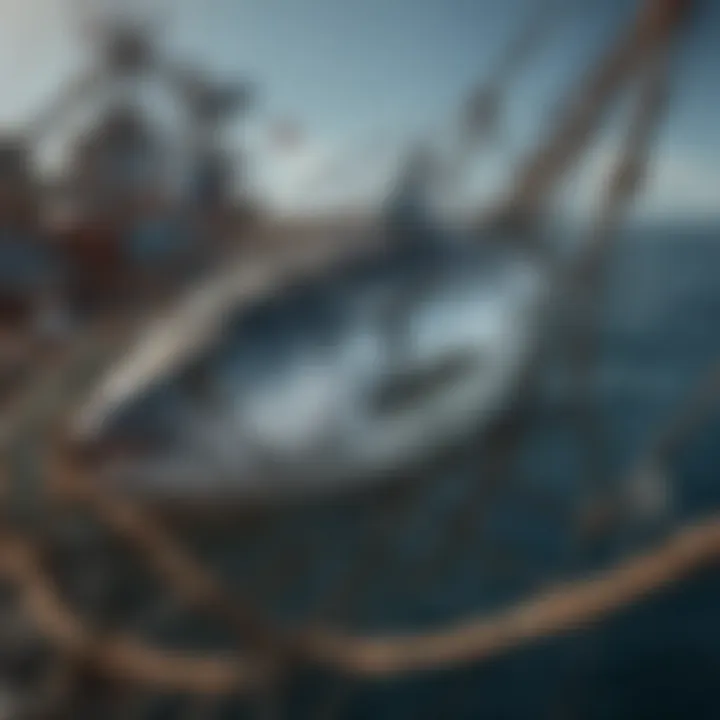
Key Statistics of Tuna Decline
A stark portrayal of the current state of tuna populations can be illustrated through several alarming statistics. It's not just a matter of numbers, but what these numbers represent for marine biodiversity and our ecological balance.
- Decline Rates: Many species, like the Southern Bluefin Tuna, have experienced population declines of over 90% since the 1950s.
- Fishing Quotas: Despite these troubling figures, global tuna fishing continues at unsustainable rates. According to reports from the Food and Agriculture Organization, approximately 70% of the world's tuna fisheries are either overfished or at their limit.
- Economic Impact: The decline also links back to economic implications, with the tuna fishing industry being worth billions. As fish stocks dwindle, not only do fishers face diminishing returns, but communities relying on this industry are left in the lurch.
This situation underscores a critical point: understanding the status of tuna populations involves recognizing the intertwined nature of ecological and economic sustainability.
In summary, the current status of tuna populations serves as a clarion call to stakeholders at every level—from fishermen to policymakers. It's not merely a scientific concern; it’s a pressing issue demanding immediate intervention.
Drivers of Endangerment
Understanding the drivers of endangerment for tuna species is crucial, as these factors interplay and significantly impact marine ecosystems. The stark reality is that tuna play an essential role in maintaining the health of the oceans, acting as both predator and prey within their ecological niches. When examining the causes behind their dwindling numbers, three main threats emerge: overfishing, climate change, and habitat destruction. Each of these drivers poses unique challenges not just to tuna, but to marine biodiversity as a whole, indicating an urgent need for effective intervention and conservation efforts.
Overfishing and Unsustainable Practices
Overfishing is arguably the most significant threat to tuna populations. This issue arises when fishing activities exceed sustainable limits, leading to a rapid decline in species numbers. The problem is compounded by unsustainable fishing practices, such as the use of drift nets and longlines, which indiscriminately catch not just tuna, but also other marine life, including endangered species.
Tuna's high market value contributes to this unsustainable trend. When you walk into a seafood market and see a flashy bluefin tuna priced at thousands of dollars, it is clear there's an intense demand. In chasing profits, fishers may prioritize short-term gains over long-term sustainability.
"The depletion of tuna stocks highlights a critical ethical dilemma in our food sourcing habits."
To illustrate, the international community recognizes specific fishery limits. However, illegal, unreported, and unregulated (IUU) fishing undermines these regulations, putting additional pressure on tuna species. Implementing stricter laws and enforcing adherence is vital for reversing this trend and restoring population health.
Impact of Climate Change
Climate change presents another formidable challenge. Tuna are migratory fish, often following prey and ideal temperatures. As ocean temperatures rise due to global warming, these migratory patterns shift, leading tuna to unfamiliar waters where their traditional prey may not exist. This disrupts existing ecosystems, resulting in cascading effects throughout marine food chains.
Additionally, ocean acidification— a consequence of increased carbon dioxide absorption—curtails the growth of critical marine organisms. This might also impact the availability of prey for tuna, further exacerbating their struggle for survival. In a world where ocean health is deteriorating, tuna’s fate hangs in the balance.
Habitat Destruction and Pollution
Finally, habitat destruction and pollution cannot be overlooked. Tuna spawn in specific environments often located near coastlines, where they are increasingly exposed to industrial development and pollution. Dredging, coastal development, and even excessive recreational boating can jeopardize these nursery areas.
Pollution is another significant concern. Plastics, chemicals, and other hazardous materials inundate our seas, resulting in toxic environments that can affect fish at all developmental stages. When tuna ingest microplastics or toxins, the consequences can ripple through entire ecosystems.
To combat these threats, creating marine protected areas can provide sanctuary for tuna and other marine species. Equally important is fostering community awareness and global cooperation to mitigate pollution and protect essential habitats.
In summary, the pressures on tuna populations are multifaceted and interconnected. Addressing these challenges requires concerted efforts from all corners—fishermen, scientists, policymakers, and the public. As we peel back the layers of these drivers, our collective responsibility becomes clear: to act decisively for the sake of tuna and the health of our oceans.
Economic Implications of Tuna Decline
The economic effects of the declining tuna populations are profound and far-reaching, influencing not just local fishery communities but also the global market. As one of the most sought-after seafoods, tuna holds a vital role in the fishing industry. In this section, we explore the implications of this decline in detail, examining its impact on employment within fishing communities and the broader market dynamics at play.
Fishing Industry and Employment
The fishing industry stands as a cornerstone of many coastal economies. Tuna, specifically species like the Bluefin, is often referred to as the ‘gold at sea’ due to its high value. However, as stocks dwindle, we see a ripple effect. Fishermen who depend on tuna for their livelihood face dire circumstances — job losses, reduced income, and even the closure of family-run businesses. Since many of these jobs have been passed down through generations, the decline in tuna populations poses a threat not only to individual jobs but also to a cultural heritage.
- Job Losses: When tuna stocks drop, fishing quotas are typically tightened to avoid overfishing. This means fewer fish can be caught, leading to fishermen losing jobs or being forced to switch to less lucrative fish species.
- Income Reduction: Even for those still able to fish, the reduction in catch means lower incomes. Many fishermen find themselves having to fish longer hours or further afield, which increases costs without guaranteeing a better catch.
- Community Impact: Entire towns often revolve around fishing activities. Decline in the industry can lead to lack of jobs, which trickles down to local businesses that rely on fishermen for sales. Grocery stores, repair shops, and local markets see a significant drop in revenue when the fishing industry struggles.
"The collapse of tuna populations is not just an environmental issue; it resonates through the economy, affecting livelihoods and entire communities that depend on the health of our oceans."
Impact on Global Markets
As tuna populations decrease, the implications extend beyond individual communities, impacting global markets in several key ways. Tuna, particularly the Bluefin, is a delicacy often found in high-end restaurants and sushi bars. The following points illustrate how the decline affects this sector:
- Price Surge: Scarcity often drives prices up. Consumers are likely to see higher prices in restaurants and supermarkets as demand still endures despite limited supply.
- Increased Competition: With the global demand for tuna remaining high, an influx of illegal or unregulated fishing could arise as entities seek to fill this void. This compromises the integrity of the market and can lead to further endangerment of tuna species.
- Market Volatility: Less predictability in tuna availability makes for a volatile market. Traders and businesses may struggle to maintain steady prices, leading to fluctuations that can destabilize financial investments associated with tuna.
As these economic consequences unfold, it’s clear that tuna decline significantly alters the landscape of local and global economies, favoring discussions on immediate action and sustainable practices.
Conservation Efforts and Strategies
Conservation efforts and strategies surrounding tuna species are not just important; they are essential for ensuring the survival of these magnificent fish and the health of the oceans. These efforts focus on innovative solutions, collaboration among various stakeholders, and long-term sustainability practices. The synchronization between science, policy, and community involvement has never been more critical to tackle the decline of tuna species and maintain marine biodiversity.
International Regulations and Agreements
International regulations and agreements play a pivotal role in the conservation of tuna species. Organizations like the International Commission for the Conservation of Atlantic Tunas (ICCAT) and Western and Central Pacific Fisheries Commission (WCPFC) work collaboratively with countries to set quotas and implement sustainable fishing practices. These agreements are designed to ensure that tuna populations are not overexploited and that ecosystems remain balanced.
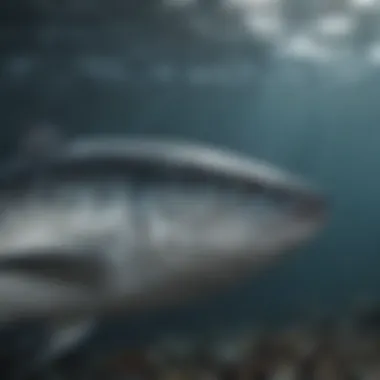
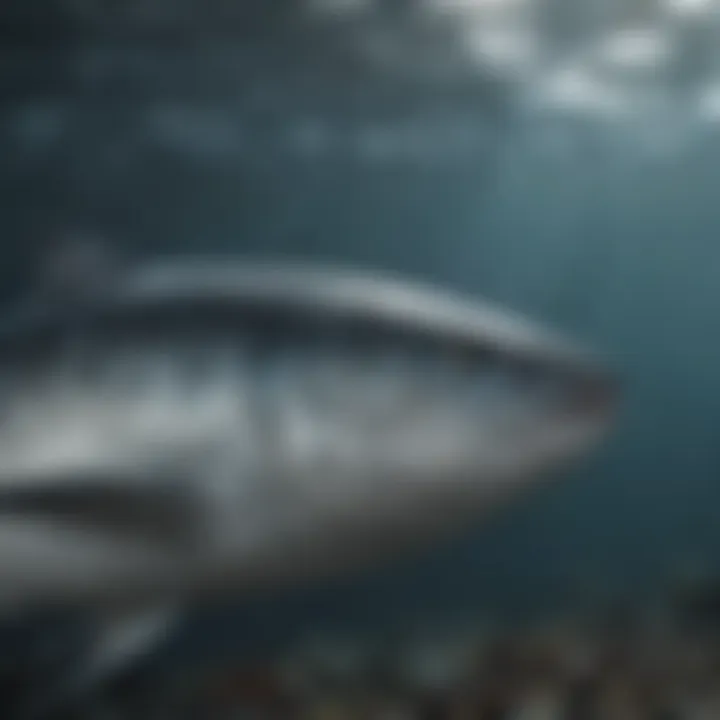
These regulations emphasize several key aspects:
- Quota Management: Assigning catch limits to avoid depleting tuna stocks.
- Bycatch Reduction: Minimizing the capture of non-target species through stricter rules.
- Monitoring and Compliance: Establishing observer programs and enforcement mechanisms to ensure adherence to guidelines.
For instance, ICCAT has developed a recovery plan for the Atlantic bluefin tuna that includes strict quotas, monitoring measures, and penalties for noncompliance. By collaborating on such regulations, participating countries hope to see a swifter recovery of endangered stocks, promoting healthier marine environments.
Sustainable Fishing Practices
Sustainable fishing practices are at the heart of conserving tuna populations. This involves techniques that reduce harm to the ecosystem while ensuring long-term productivity of tuna species. Some effective practices include:
- Selective Fishing Gear: Using equipment that targets specific tuna species while avoiding bycatch.
- Seasonal Closures: Temporarily banning fishing during critical breeding periods allows fish populations to recover.
- Fisher Certification Programs: Initiatives like the Marine Stewardship Council (MSC) promote harvesting practices that are environmentally sustainable.
The adoption of these practices not only helps tuna species recover but also supports fishing communities economically. Maintaining a steady supply of fish contributes to food security and upholds traditional livelihoods.
Community Involvement in Conservation
Community involvement is a cornerstone of successful conservation strategies. In many coastal nations, local communities are the first line of defense in safeguarding tuna populations. Their experiences and knowledge of sustainable practices form a vital link in the conservation chain. This can be seen through:
- Local Fishing Regulations: Communities establish their own rules that align closely with traditional practices and conservation needs.
- Educational Outreach: Workshops and programs educate fishers about sustainable methods, creating a culture of stewardship.
- Partnerships with NGOs: Collaborations between communities and organizations help in resource mobilization, capacity building, and sharing best practices.
"Involving local fishermen and communities leads to better outcomes for tuna conservation because they are often the most invested in keeping fish populations healthy."
By engaging local communities, conservationists can foster a sense of ownership and responsibility towards marine resources, ensuring that the protections put in place are respected and adhered to.
Case Studies of Successful Conservation
Conservation efforts are often perceived as daunting, especially when tackling the decline of a species as vital as tuna. However, analyzing specific cases where strategies worked can inspire hope and provide a roadmap for upcoming initiatives. These cases serve as touchstones demonstrating the efficacy of concerted action in reversing trends of endangerment. By reflecting on what worked, stakeholders can glean insights applicable across the board, fostering new ideas to safeguard these valuable marine creatures.
The Revival of Atlantic Bluefin Tuna
The story of the Atlantic Bluefin Tuna’s rebound offers a glimmer of hope in the dire landscape of tuna conservation. Once commercially overfished to the brink of collapse, this species has seen measurable improvement thanks to the collective efforts of international regulations and stricter fishing quotas. The implementation of the 2010 ICCAT (International Commission for the Conservation of Atlantic Tunas) quotas was pivotal. It established limits based on scientific assessments rather than speculative catch numbers. This move emphasized the need for sustainability rather than short-term profits.
"Sustainable fishing isn’t just about saving a species; it’s about preserving the entire ecosystem."
The revival was not merely a product of regulatory measures; it was enhanced by heightened awareness and consumer action. Seafood markets began promoting sustainably sourced tuna, leading to changes in buying habits. Product labels indicating sustainable fish sourcing started flooding supermarkets, pushing consumers to opt for products linked to responsible fishery practices.
Key takeaways include:
- Regulated Quotas: Introduced to maintain population balance
- Consumer Awareness: Elevated concern led to changes in purchasing decisions
- Management Framework: Provided systematic guidelines for fishing practices
Innovative Solutions from Fisheries
The realm of tuna conservation is not short of creativity. From cutting-edge technology to community-driven initiatives, fisheries worldwide are developing innovative solutions aimed at sustainability. For instance, the use of satellite technology has revolutionized tuna tracking, allowing fishermen to monitor fishing zones while generating real-time data on population movements. This helps in understanding migratory patterns, which can directly inform fishing strategies.
Moreover, some fisheries have adopted bycatch reduction technologies. These tools are designed to minimize the unintentional capture of non-target species, thereby enhancing overall ecological health. For example, the use of circle hooks and other selective fishing gear reduces harm to juvenile and non-target fish, contributing to healthier tuna stocks.
Some noteworthy solutions include:
- Electronic Monitoring: Recording data for compliance and transparency
- Fish Aggregating Devices (FADs): Used strategically to reduce bycatch while boosting tuna stocks
- Community Engagement Programs: Local fishermen involved in conservation discussions, leading to tailored solutions that reflect their unique ecological contexts
By focusing on real-world case studies showing success, the broader conversation surrounding tuna conservation can transition from despair to action. These examples are critical not just for tuna but the overall health of marine ecosystems.
Role of Technology in Research
Technology has become a pivotal ally in understanding the endangered status of tuna species. As the complexities surrounding marine ecosystems continue to grow, harnessing technological advancements helps illuminate the intricate web of interactions that influence tuna populations. Through innovative tools and methodologies, researchers can gather crucial data, enabling them to make informed decisions regarding conservation strategies and management practices.
Tracking and Monitoring Tuna Populations
To grasp the migratory patterns and population dynamics of tuna, tracking technology is vital. Techniques such as satellite tagging and acoustic monitoring provide invaluable insights into where these fish go and how they interact with their environment. By using satellite-linked tags, scientists can follow tuna across vast ocean expanses, gathering data on their movement patterns, breeding sites, and feeding habits.
This information is not merely academic; it informs policy decisions and protective measures. For instance, when scientists identified a critical breeding ground for Pacific bluefin tuna through tracking, it led to the establishment of marine protected areas, giving these fish a better shot at survival.
Furthermore, the use of mobile apps that engage recreational fishers in reporting their catches aids in expanding the data set. This grassroots approach depersonalizes data collection – making it collaborative and robust. When localized fishermen share their observations, researchers can build a more resilient understanding of tuna health, which significantly contributes to the conservation narrative.
Data Analysis and Predictive Modelling
Equally important to tracking is the analysis of the data collected. Advanced data analysis, coupled with predictive modelling, reveals trends and forecasts potential future states of tuna populations. Using tools like machine learning algorithms, researchers can sift through mountains of data to identify patterns that would be otherwise buried in noise.
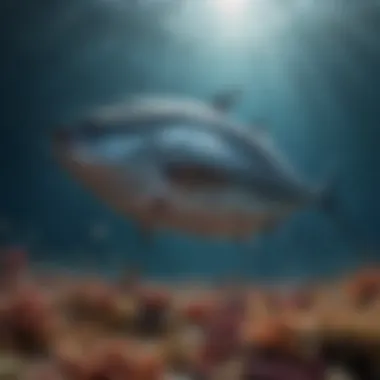

Such modeling enables scientists to predict how tuna populations will respond to various stressors, like climate change or changes in fishing practices. By integrating different variables – from ocean temperatures to fishing quotas – predictive models offer a nuanced view that can guide marine management efforts. They help anticipate potential outcomes, allowing for proactive rather than reactive strategies.
The information gleaned from data analysis can drive regulations that promote sustainable fishing practices. Decision-makers can leverage these models to create more effective conservation policies, aligning with economic and environmental interests. As the old saying goes, "knowledge is power." In this case, it’s the power to safeguard the future of tuna species.
"The use of technology in tuna research is not only about survival; it's about ensuring the future health of whole marine ecosystems."
Public Awareness and Education
Public awareness and education play a crucial role in the conservation of tuna species. Knowledge about the current state of tuna populations and the threats they face can transform consumer behavior and influence policy change. Increasing public understanding fosters a sense of responsibility and activism, driving efforts to protect these vital marine animals. When consumers realize the impact their choices have on tuna populations, they may be more inclined to engage in sustainable practices.
Impact of Consumer Choices
Consumer choices hold considerable sway over tuna sales and fishing practices. When people opt for sustainably sourced tuna, they not only contribute to the preservation of tuna stocks but also encourage fisheries to adhere to better practices. Moreover, the growing demand for certified sustainable seafood can drive significant changes in the fishing industry.
- Certification Programs: Labels like the Marine Stewardship Council (MSC) provide transparency in the sourcing process. Consumers can make informed decisions, promoting fisheries that utilize responsible fishing methods.
- Market Trends: A shift toward sustainable seafood consumption can reshape market dynamics. As more consumers prioritize responsible sourcing, retailers often adapt to meet these demands, which can lead to significant economic shifts favoring sustainable practices.
A consumer's purchasing power can either exacerbate or alleviate the pressures on tuna populations. Awareness campaigns that highlight the benefits of choosing sustainably sourced tuna will empower individuals to make choices that align with environmental conservation goals.
Educational Programs and Campaigns
Education is a cornerstone of effective conservation strategies. Various programs and campaigns aim to educate the public about tuna conservation, emphasizing its ecological significance and the implications of overfishing. These efforts can range from formal educational initiatives to grassroots campaigns that promote awareness.
- School Programs: Initiatives that incorporate marine biology and conservation into curricula can cultivate an early understanding of environmental issues among students. This could involve hands-on activities such as field trips to marine reserves or workshops with conservation organizations.
- Community Workshops: Local communities can host workshops to discuss sustainable fishing practices and the importance of responsible consumption. These events can foster dialogue and empower locals to take action.
- Social Media Campaigns: Platforms like Facebook and reddit provide effective channels for spreading awareness about the plight of tuna. Creative campaigns that leverage storytelling can engage a wider audience, helping to elevate the importance of tuna conservation in public discourse.
"Education is a weapon powerful enough to change the world." — Nelson Mandela
In sum, public awareness and education are vital for fostering a culture of conservation. As people become more informed and engaged in the issues surrounding tuna species, they are more likely to make decisions that benefit marine ecosystems and contribute to the survival of these impressive creatures.
Future Directions in Tuna Conservation
Tuna conservation faces many challenges, but there is hope on the horizon. The future of tuna species will hinge on new research, robust collaboration, and innovative practices. Each of these elements can significantly impact conservation efforts, ensuring that tuna not only survive but thrive in our oceans for generations to come.
Emerging Research Trends
In the realm of tuna conservation studies, researchers are pushing the envelope to understand these complex creatures better. We're observing a surge in genetic studies aimed at identifying distinct populations of tuna. This can aid in developing targeted strategies for recovery, based on how specific groups are faring.
Moreover, advances in technology continue to reshape our understanding. For instance, satellite tracking is enabling scientists to follow the movements of tuna across vast oceans. This can provide vital insights into their migration patterns and feeding habits. By knowing where and when they gather, it can help regulate fishing efforts more effectively. Not to forget, machine learning is becoming increasingly popular in analyzing patterns from large data sets. This helps to predict population trends, ultimately prescribing a way forward for intervention. Furthermore, researchers are looking into the effects of microplastics and pollutants on tuna health. This aspect is crucial as it highlights the need for broader environmental policies that go hand in hand with conservation efforts.
By investing in research that addresses both biological and ecological aspects, it becomes possible to foster a comprehensive approach to tuna conservation.
Global Collaborative Initiatives
On the collaborative front, there's a fundamental shift occurring. Nations are slowly recognizing that tuna conservation cannot rest on the shoulders of any single country. It’s too big, too complex; it requires collective action. Regional Fisheries Management Organizations (RFMOs) play a critical role here, as they bring various countries to the table to discuss the shared management of tuna stocks.
Another key player in collaboration is the establishment of initiatives like the Tuna Research and Conservation Partnership. This fosters cooperation between scientists, fishermen, and policymakers, creating a platform for sharing knowledge and strategies. For example, certain fisheries are engaging in sustainable fishing methods by adopting catch shares. This system allows fishermen to have a stake in the health of tuna populations since their income is directly tied to the sustainability of the stocks.
Moreover, local communities are also forming alliances with NGOs to promote awareness and partake in conservation initiatives. Situations in places like the Pacific Islands illustrate how local communities can enact powerful changes. They take ownership of their resources, creating marine protected areas that sustain tuna populations. Ultimately, through global and local partnerships, tuna conservation becomes a shared responsibility, blending scientific insight with community involvement.
"Conservation is a global responsibility, not a local dilemma. Every effort counts, and collaboration is key."
Culmination: The Path Forward
As we near the end of this exploration into the precarious status of tuna species, it becomes abundantly clear that we stand at a crossroads. The future of these magnificent fish is intertwined with our actions today. Ignoring their plight is not just a disservice to a crucial component of marine ecosystems, but it also affects the livelihoods of millions who depend on tuna for their economic sustenance. Consequently, taking actionable steps towards a sustainable future is not merely beneficial; it's essential.
Understanding that every fish we catch and every decision we make ripples through the ecosystem is pivotal. Tuna are not just fish; they are vital players in marine food webs. Their decline translates to detrimental effects on the health of oceans. The significance of this issue goes beyond the mere preservation of a species; it impinges upon marine biodiversity as a whole.
Moving forward, we must analyze various facets of tuna conservation, particularly the economic implications, the need for public awareness, and the roles of various stakeholders. By investing in sustainable fishing practices and supporting international regulations, we can foster not only recovery but growth in tuna populations. Here are key considerations for a forward path:
- Emphasizing Education: Educating consumers can lead to informed choices, thereby influencing market demand towards sustainable seafood.
- Promoting Collaborative Efforts: Fishery management organizations and international bodies must collaborate to reinforce sustainable practices across borders.
- Advocating for Research: Continued investment in research is fundamental. Tracking populations and understanding their ecosystem roles allows for tailored conservation efforts.
"The health of oceans reflects the choices we make on land; every individual has a role in shaping the future of marine life."
In sum, those in academia, industry, and advocacy uniquely hold the torch of accountability to the next generations. We owe it to them to ensure the survival of tuna species, alongside sustaining the delicate balance of marine environments. Future conservation activities should center not just on halting detrimental practices but also on nurturing ecosystems, contributing positively to the natural world. The path may not be straightforward, but the responsibilities we undertake today will assure not only the survival of tuna but also a stable marine environment for future generations.
Reflecting on Responsibilities for Future Generations
The concept of responsibility extends to each of us as stewards of the planet. We must consider how our choices today will shadow future ecosystems. Tuna, though they might seem distant from our daily lives, are an integral part of the planet's health. Their status as endangered can be linked back to human activities, fishing practices, pollution, and climate change. Taking a hard look at these factors reflects our obligation not only to the fish but also to our planet.
Future generations will inherit the consequences of our actions—or lack thereof. It is crucial to foster a mindset of respect and responsibility towards the natural world. Here are some considerations:
- Educating Youth: Children should learn the significance of marine conservation and be encouraged to be advocates for sustainability.
- Supporting Local Practices: Choosing locally sourced seafood can put less strain on global fisheries, allowing tuna and other species the opportunity to thrive.
- Promoting Policies: Voting for leaders and policies that prioritize environmental sustainability can influence larger systemic changes.
This reflection is a clarion call. To ensure a livable future, it is imperative to act—it’s no longer just about survival; it's about thriving. The stewardship of tuna is intricately linked to the global commitment to safeguarding biodiversity. Ultimately, it’s our collective effort, built on knowledge and action, that will decide the fate of not just tuna, but the entire marine ecosystem.







